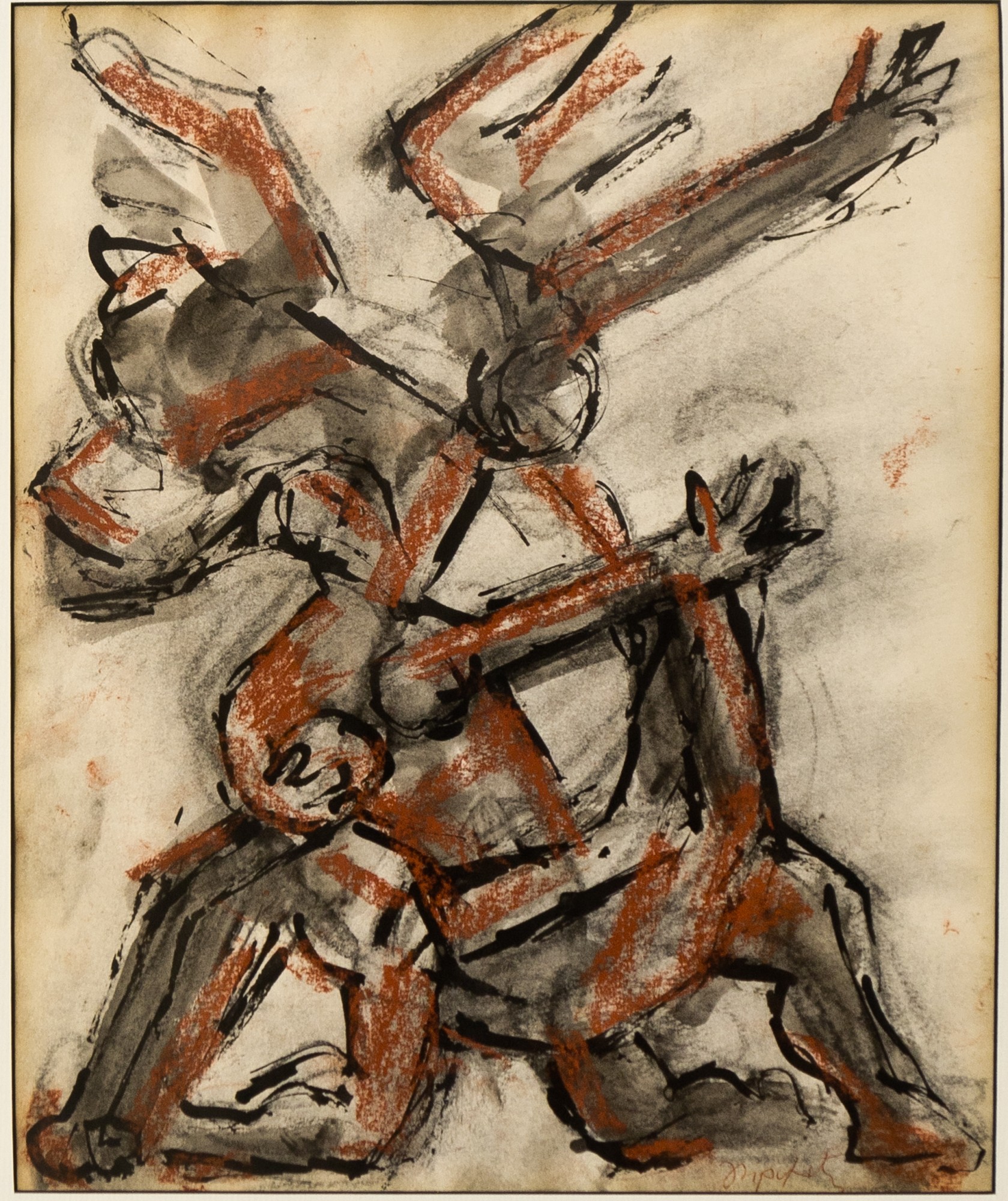Exhibit of the month |
← |
Published: 2019-08-09

Jacques Lipchitz. Hagar in the Desert. Sculpture design sketch. Paper, mixed media techniques; 41 x 34; VVGŽM
The sketch for the sculpture Hagar in the Desert by Jacques Lipchitz (1891 – 1973) was inspired by the Biblical story of Hagar, Sarah‘s servant from Egypt, with whom Abraham conceived his son Ishmael at the moment in life when he and his wife Sarah lost hope of giving birth to their mutual progeny. Following rows with the mistress of the house, pregnant Hagar went into the desert, but was convinced by an angel to return to the family. After a miracle happened and Sarah gave birth to Isaac, rows between Sarah and Hagar started again. Finally, Hagar took her son and left for the desert for the second time. It was there that an angel found them barely alive and promised Hagar that her son will also become the progenitor of a strong nation on Earth.
In this sketch, Lipchitz portrayed the second departure of Hagar for the desert. The artist used the technique of merging several figures together into a single piece, which he liked doing since his early years as a Cubist artist. Here he merges the figures of Hagar, Ishmael and the angel into one. As a result, one figure becomes part of the other (e.g. the mother holds the head of her exhausted and prostrate son which at the same time appears to be part of her breast). The parallel stretched hands of the two figures seemingly symbolise two different actions: the stretched hand of Hagar is a symbol of pleading, whereas the stretched hand of the angel symbolises a promise and a direction.
When working on his sculptures and their sketches, Lipchitz tended to return to the same plot time and again, often even dozens of times. This particular sketch was created in 1948 and the bronze sculpture was made only in 1969.
Maternity is one of the key plots characteristic of the so called American period (1941-1973) in the creative life of Jacques Lipchitz. During the final years of the war and in the post-war period when the first horrific pictures from concentration camps reached American society, the artist created a number of dramatic compositions titled Mother and Child. Being a humanist and in search for symbols that would bring the disjointed post-war world together again, Lipchitz accepted the request of his acquaintance, a French abbot, and created a sculpture of Virgin for a church in the Haute-Savoie region of France. Later he created another sculpture bearing the same title for the Argyll abbacy in Scotland. On the pedestal of one of the sculptures the artist left an inscription with read as follows: ‘Jacob Lipchitz, a Jew faithful to the religion of his ancestors, made this Virgin for the good understanding of mankind upon earth, as long as the Spirit reigns.’
In 1948, several miraculous events happened in the life of the artist: being of mature age he fathered a daughter named Loyla and news about the rebirth of the State of Israel travelled the world. Lipchitz expressed his joy by creating Miracle, a piece of art full of Judaic symbols. However, soon military conflicts sparked in the Holly Land, which saddened the artist very much. Just like he did many times before, Lipchitz took to searching for answers in Biblical stories and it was then that the story of Hagar caught his attention. Later in his autobiographic book My Life in Sculpture the artist wrote that Hagar in the Desert symbolises hope ‘that we will finally find a way to live like brothers, just like it used to be for ages…’
Prepared by Aušra Rožankevičiūtė, museology specialist at History Research Department
| ↑ | ← |
